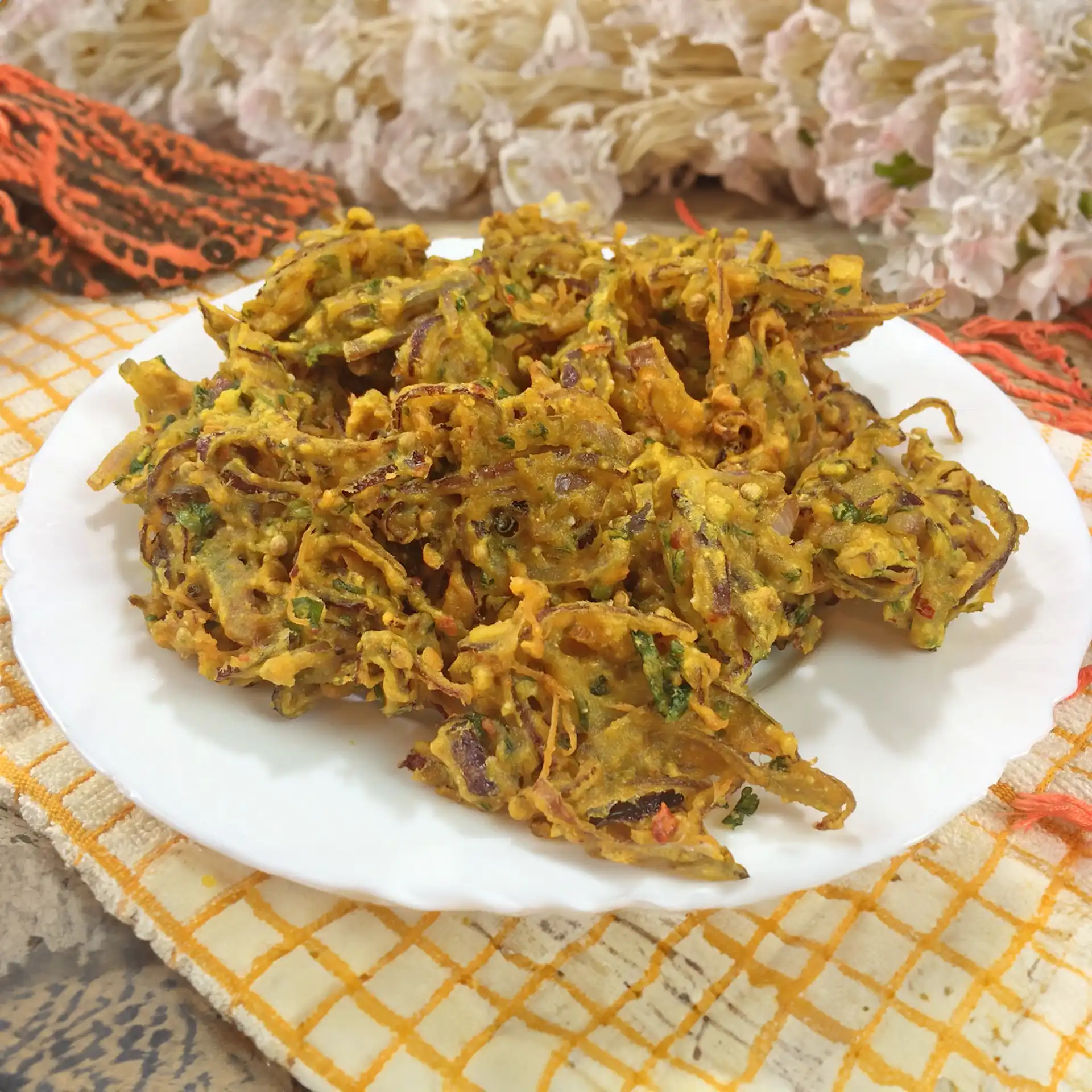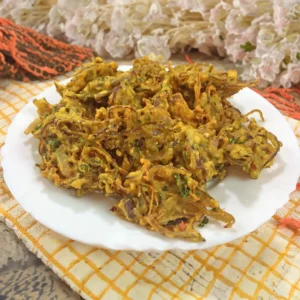
I’m excited to introduce you to a classic Indian snack that’s bursting with flavor – Onion Pakora! Originating from the Indian subcontinent, this crispy and delicious dish is a staple in many households and street food stalls.
Onion pakoras are essentially fritters made with thinly sliced onions mixed with a flavorful blend of spices, gram flour, and rice flour. They are then deep-fried to golden perfection, resulting in a crunchy exterior and a soft, flavorful interior.
Despite its mouthwatering taste, onion pakoras are surprisingly easy to make, making them perfect for beginners in the kitchen.
With just a few simple ingredients and basic cooking techniques, you can whip up a batch of these irresistible snacks in no time.
Expert Tip: Test the oil temperature by dropping a small amount of batter into the pan. It should sizzle and rise to the surface with tiny bubbles around it. This indicates that the oil is hot enough for frying, resulting in crispy pakoras.
Onions: Onions provide a sweet and savory flavor to the pakoras. When thinly sliced and mixed with the batter, they add a delightful crunch and aroma.
Salt: Salt not only enhances the flavor of the pakoras but also helps to draw out moisture from the onions, ensuring they become crispy during frying.
Chilli Powder and Crushed Chillies: These spices add a kick of heat to the pakoras, balancing out the sweetness of the onions.
Coriander Seeds: Crushed coriander seeds impart a subtle citrusy and earthy flavor to the pakoras, complementing the other spices.
Green Chillies: Adding finely chopped green chillies gives an extra layer of heat and freshness to the pakoras.
Turmeric Powder (Haldi): Turmeric not only adds a vibrant yellow color to the pakoras but also offers a warm and earthy flavor.
Coriander: Fresh coriander leaves add brightness and freshness to the pakoras, enhancing their overall flavor.
Gram Flour: Also known as besan, gram flour is the main binder in the pakora batter. It provides a nutty flavor and helps create a crispy texture when fried.
Rice Flour: Rice flour adds an extra crispiness to the pakoras, making them even more delightful.
Expert Tip: Gradually add water to the batter until you achieve a thick, pourable consistency. Adding too much water at once can make the batter too runny, resulting in soggy pakoras.
Expert Tip: Make sure to slice the onions thinly for crispy pakoras. Thicker slices may result in uneven cooking and a less crispy texture.
Yes, you can prepare the batter for onion pakoras ahead of time and store it in the refrigerator for up to a day. However, it’s best to fry the pakoras just before serving to ensure they stay crispy.
While you can freeze onion pakoras, they are best enjoyed fresh. Freezing may affect their texture, making them less crispy. If you do freeze them, reheat them in the oven to help revive their crispiness.
Absolutely! You can experiment with different vegetables such as potatoes, spinach, cauliflower, or bell peppers to make pakoras. Just make sure to adjust the seasoning and spices accordingly to suit the flavor of the vegetables.
If you have any leftover onion pakoras, store them in an airtight container in the refrigerator for up to two days. To reheat, place them in a preheated oven until they are warmed through and crispy.
While deep frying yields the crispiest results, you can also bake onion pakoras in the oven for a healthier option. Simply preheat the oven, place the pakoras on a baking sheet lined with parchment paper, and bake until golden brown and crispy.
The level of spiciness in onion pakoras can be adjusted according to your preference. If you prefer a milder flavor, you can reduce the amount of chili powder and green chilies in the recipe. Conversely, if you like it spicier, you can increase the amount of chili powder or add extra green chilies.
Here are some more recipes for you to enjoy! If you my recipes don’t forget to rate and leave a comment.
If you have any recipe suggestions, please do not hesitate to ask me. A great way to stay in contact with me is through Instagram, Facebook, Twitter and YouTube. Don’t forget to tag me @CookwithNabeela in your recipe photos!

Subscribe now to receive my latest recipes directly in your inbox. Stay up-to-date and never miss out!

I love to cook! I want to share with you my favourite, delicious family-friendly recipes. I want to inspire you to create fantastic food for your family every day.
Add your first comment to this post